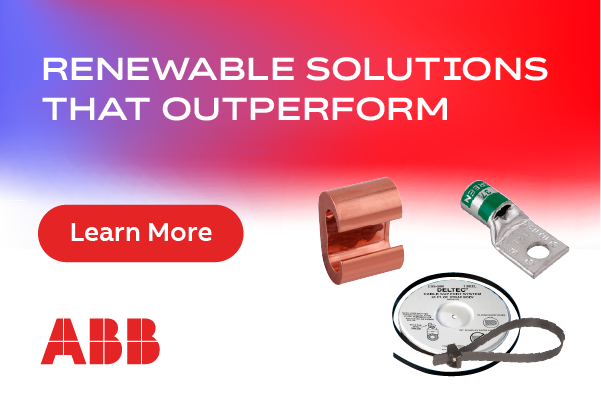U.S. Wind Turbine Manufacturers Work Together
Driving down costs, expanding exports, and increasing domestic sales
Both exports and domestic sales by U.S. distributed wind turbine manufacturers doubled last year over 2014 to nearly 26 MW and installed costs have decreased 20 percent since 2013, according to new market statistics compiled by the Pacific Northwest National Laboratory.
To continue pushing forward both trends, a team of U.S. manufacturers have partnered together with academic researchers and other industry stakeholders to pursue innovative approaches for reducing lifecycle costs and scaling up production volumes - while maintaining high quality - by recognizing the most urgently needed joint actions in a recently released Sustainable Manufacturing, Advanced Research & Technology (SMART) Wind Roadmap.
More than two dozen distributed wind energy equipment manufacturers, 50 other vendors and industry supply chain members, researchers from 4 federal laboratories, 30 academic stakeholders, and nearly 20 nonprofit organizations, government representatives and other stakeholders convened over a two-year period to develop a shared vision on common distributed wind research and manufacturing gaps and barriers, and prioritized solutions to those gaps for today and for future scalability.
The U.S. distributed wind industry stands poised to provide cost-effective solutions and claim its share of the multi-trillion dollar global microgrid boom. The Roadmap's vision is to connect and inspire vital industry-academic R&D investments to advance innovative manufacturing techniques and aid rapid distributed wind growth.
Convincing competitors to collaborate and cooperatively invest in critical actions is key for helping U.S. manufacturers remain global leaders in expanding distributed wind deployment worldwide. The landmark consensus-based Roadmap charts a clear industry-wide path forward to increase American jobs, competitiveness and market share in the growing distributed generation sector.

Key actions recommended
With grant funding from the U.S. Department of Commerce's National Institute of Standards and Technology (NIST) Advanced Manufacturing Technology Consortia program, the Distributed Wind Energy Association (DWEA) launched the targeted SMART Wind Consortium to facilitate a rapid transfer of innovation into American-manufactured wind turbines. Implementing the Roadmap will open up new market opportunities and expand the number of distributed wind applications, maintaining U.S. global competitiveness and leadership. Top priority action steps include:
- Optimizing and harmonizing wind turbine designs to improve levelized cost of energy (LCOE) and achieve parity with U.S. retail electricity rates in more markets, including developing a common core modular inverter, utilizing wide bandgap materials (advanced semiconductors) in power electronics, and creating new standard support structure designs
- Improving manufacturing processes and materials including incorporating lean manufacturing practices, new approaches to hot-dip galvanization, efficient fixturing and tooling, and non-destructive testing methods
- Optimizing standards and certification processes to enable technology evolution and maintain quality, including conducting a gap analysis for certification requirements for various global markets
- Streamlining installation and maintenance of wind turbine systems; develop low-cost prognostic condition monitoring to provide a feedback loop on field performance to equipment manufacturers
- Sustaining SMART Wind Consortium activities and partnerships to allow for further refinement of costs and benefits of top actions, creation of a supplier directory and industry-wide reliability and materials databases, and funding for R&D and workforce training
These prioritized action steps will help reach DWEA's "30 GW by 2030" vision, aiding distributed wind industry growth and advancing innovative manufacturing techniques by increasing production volumes and reducing lifecycle costs while maintaining high quality.
Top cost reduction opportunities
Aggregated breakdowns of eight leading U.S. wind turbine manufacturers' top-level bills of materials (BOMs) revealed the main overall component cost contributors of total system costs for both micro/residential and commercial/mid-size sectors. Towers are the single highest cost element, and foundations also represent significant cost.
For mechanical subsystems, the gearbox and bedplate are the most expensive, particularly for larger turbines. Blades are the dominant focus for composites. Under electrical subsystems, inverters (for the micro/residential sector), the control panel (for the commercial sector), and generator/alternators are the top cost contributors. Installation costs are not included in the BOMs, but it and other items such as turbine assembly, site development and preparation, zoning and permitting, transportation and logistics, and other non-hardware costs can contribute substantially to the overall system cost.
SMART Wind Consortium meetings investigated lean manufacturing and innovation engineering and other manufacturing improvement philosophies that can be deployed to increase the competitiveness of distributed wind equipment manufacturers. The strategy for the U.S. distributed wind industry's continued growth is to increase manufacturing process improvements incrementally while addressing shifting production levels, taking individual steps that will reduce manufacturing costs but not become an undue financial burden.

Applying the action steps identified by the SMART Wind Consortium will result in more competitive systems and greater market share for U.S. manufacturers. This will accelerate deployment of U.S. technology, helping to generate clean, renewable energy, increase employment in the sector, and bolster the capabilities of this U.S.-led industry.
Heather Rhoads-Weaver is founder and principal consultant of eFormative Options, LLC, specializing in advancing sustainable energy solutions, creating funding and resource plans, and strengthening relationships with stakeholders, drawing on substantial experience and lessons learned with managing complex data and successful consensus-building efforts.
eFormative Options, LLC | www.eformativeoptions.com
Britton Rife is communications manager for the Distributed Wind Energy Association, a collaborative group of manufacturers, distributors, project developers, dealers, installers, and advocates, whose primary mission is to promote and foster all aspects of the American distributed wind energy industry.
The Distributed Wind Energy Association | www.distributedwind.org
A 90-minute virtual briefing by SMART Wind Consortium leaders highlighting top-priority action steps to address key distributed wind industry barriers and opportunities is can be viewed free-of-charge at: http://distributedwind.org/event/smart-wind-roadmapwindexchange-webinar/
Volume: 2016 July/August








